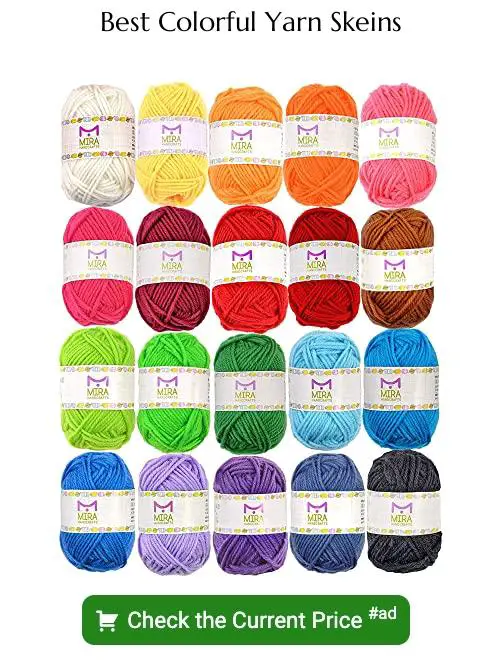Discover the vibrant world of yarn colors as we explore various types and hues, perfect for bringing your knitting and crochet projects to life.
Are you a yarn enthusiast who loves to experiment with different colors in your projects? If so, you’ll know that choosing the right color of yarn can make all the difference in your finished product. With so many options available, it can be overwhelming to decide which colors to choose for your next project.
Fear not! In this blog post, we’ll explore the different types of yarn colors and provide some tips on how to select the perfect shade for your next knitting or crocheting adventure. So grab a cup of tea and let’s dive into the colorful world of yarn!
Solid Colors

Solid Colors: Solid colors are the most basic and straightforward type of yarn color. They come in a single, uniform shade without any variation or pattern.
Solid colors are perfect for beginners who want to keep things simple or for those who prefer a more classic look in their projects. These types of yarns can be used alone or combined with other types of yarns to create interesting textures and patterns.
When choosing solid-colored yarn, it’s essential to consider the project you’re working on carefully. For example, if you’re making an intricate lace shawl that requires delicate stitches, it’s best to choose a light-colored solid yarn that will show off your work beautifully.
On the other hand, if you’re knitting or crocheting something like a cozy sweater where warmth is key; darker shades such as navy blue would be ideal since they absorb heat better than lighter hues.
Heathered
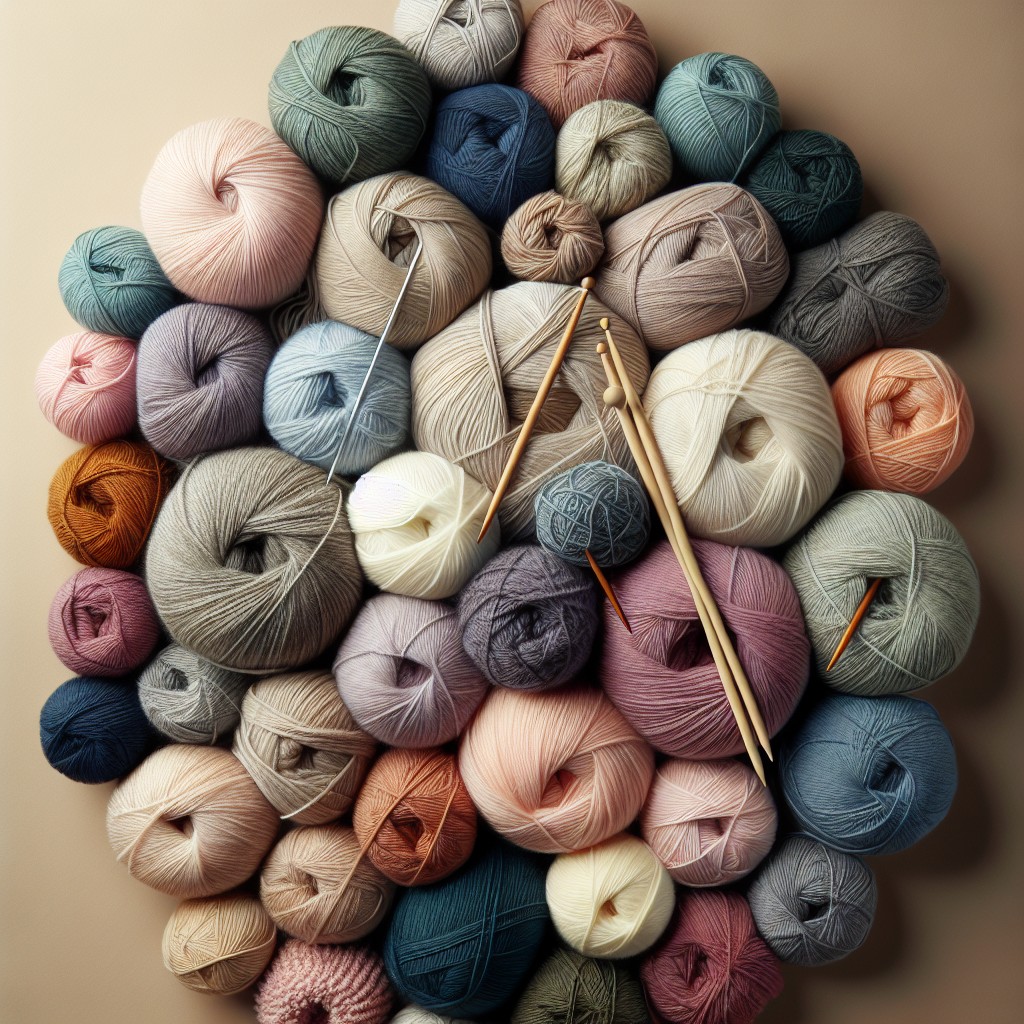
Heathered yarn is created by blending two or more colors of fiber together before spinning, which results in a muted, speckled effect. This type of yarn can be found in both natural and synthetic fibers.
One advantage of using heathered yarn is that it adds visual interest without being too overpowering. It’s perfect for creating subtle color changes within your project or adding dimension to simple stitch patterns.
When selecting heathered yarn, consider the overall look you’re trying to achieve with your project. If you want a more rustic feel, opt for earthy tones like browns and greens blended together.
For a brighter pop of color, choose heathered skeins with jewel-tones mixed throughout.
Highly Variegated
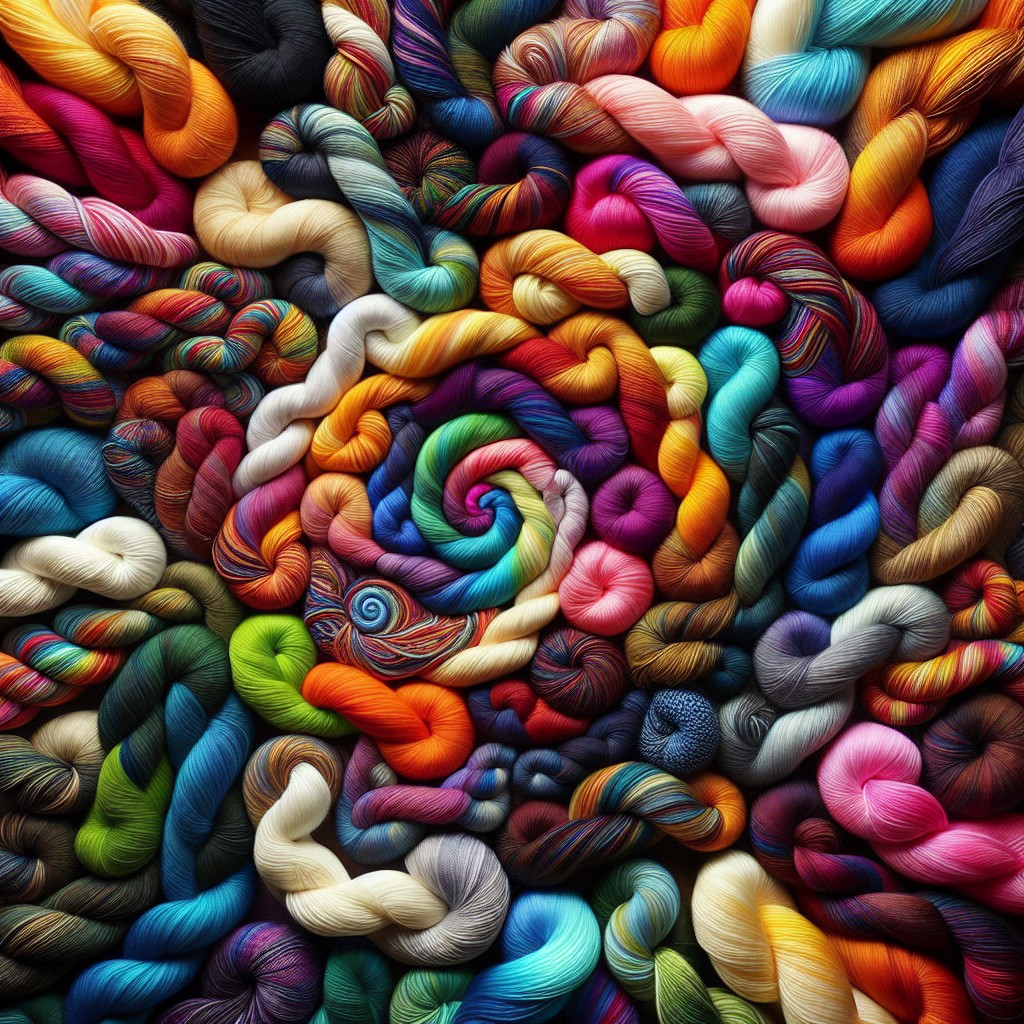
These types of yarns feature multiple colors that blend together in a random pattern, creating a unique and eye-catching effect. Highly variegated yarn can be challenging to work with as the color changes can sometimes obscure stitch patterns or make them difficult to see.
However, when used correctly, highly variegated yarn can create stunning results in your projects. One way to use this type of yarn is by pairing it with solid-colored or semi-solid colored yarns that complement one of the hues found within the highly variegated skein.
Another technique is using simple stitch patterns such as stockinette or garter stitches which allow the color changes in the highly variegated skein to shine through without being obscured by complex stitches.
Kettle-Dyed
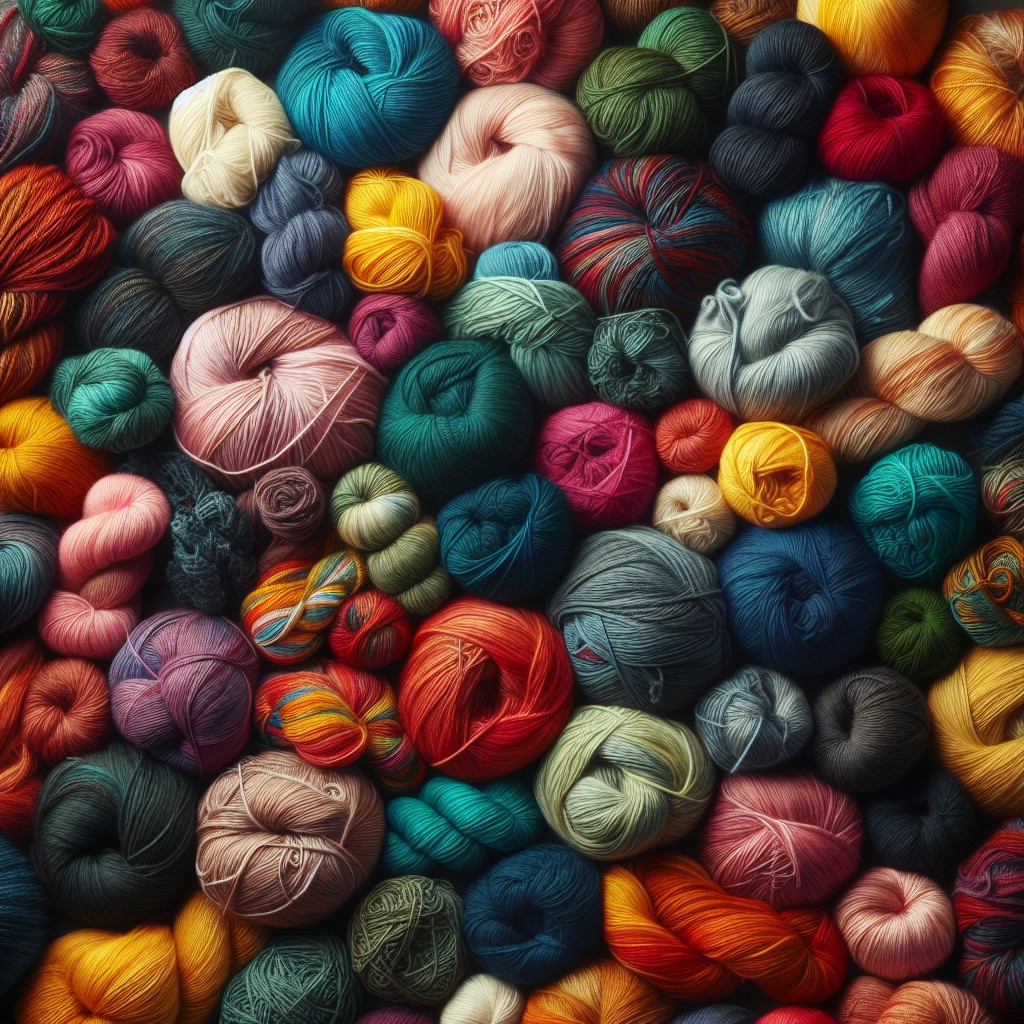
Kettle dyeing involves hand-painting the skein of yarn in a large pot or “kettle” to create subtle tonal changes and depth of color. The result is often a beautiful blend of colors that can add texture and interest to your project.
Kettle-dyed yarns are perfect for creating shawls, scarves, hats, and other accessories where you want the colors to be the star of the show. They work well in both knitting and crochet projects alike.
When selecting kettle-dyed yarns for your project, keep in mind that each skein will have slight variations due to its handmade nature. It’s essential to purchase enough skeins from one dye lot so that there aren’t any noticeable differences between them when used together.
If you’re looking for something unique with subtle tonal changes throughout your project’s fabric – consider using kettle-dyed wool!
Self-Striping
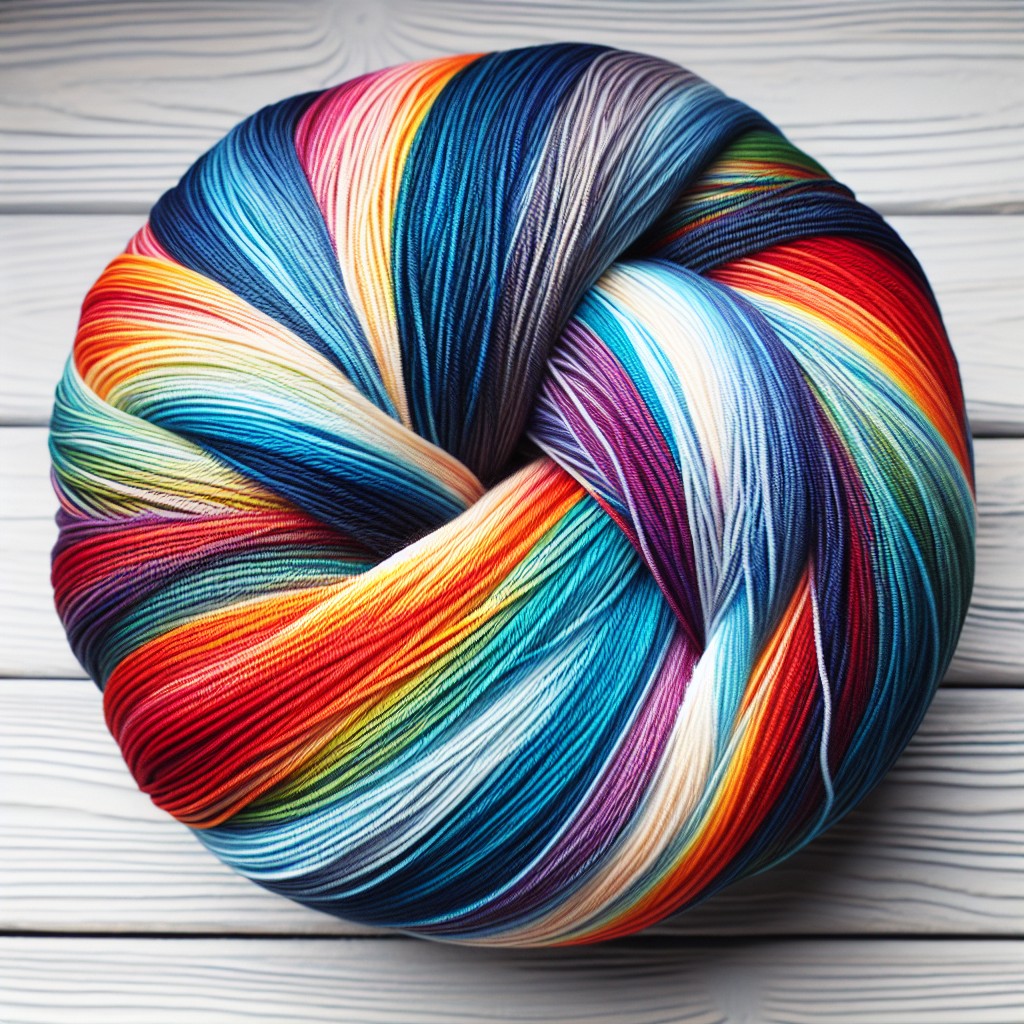
These yarns come in different stripe widths, ranging from narrow stripes that produce a subtle effect, to wide stripes that make bold statements.
One of the benefits of self-striping yarn is its versatility. You can use it for various projects such as scarves, hats, socks or even blankets.
The color changes happen automatically as you work with the yarn which makes it easy and fun.
Another advantage is that self-striping patterns can be used alone or combined with other types of solid-colored or variegated yarns to create unique designs. For example, combining a self-striping skein with a coordinating solid-color skein will add depth and interest while still allowing the striping pattern to shine through.
Semi-Solid
Semi-solid colors are created by dyeing the yarn with one color, resulting in a subtle variation of shades throughout. This type of coloring is great for adding depth and texture to your projects without being overwhelming or distracting from any stitch patterns you may be using.
Semi-solid colors work well when paired with other types of yarns such as variegated or self-striping to create contrast and interest in your project. They can also add dimension when used alone, especially if you choose a shade that complements the pattern or design.
When selecting semi-solid colored yarns, keep in mind that they can vary greatly depending on how they were dyed and what fibers were used. Some may have more tonal variations than others while some may appear almost solid at first glance.
Semi-solids are versatile enough to use in many different types of projects from garments to accessories like hats and scarves.
Variegated
These types of yarns feature multiple colors that blend together to create a unique, eye-catching effect. Variegated yarn can be highly variegated with bold, contrasting colors or more subtle with softer hues that transition smoothly from one color to the next.
When working with variegated yarn, it’s important to consider how the colors will interact in your project. Some patterns may require solid-colored sections or stripes to break up the busy pattern created by variegation.
One way to make sure your project turns out just as you envisioned is by swatching before starting on your main piece. This allows you to see how the different shades work together and adjust accordingly if needed.
Gradient Colors
These yarns feature a gradual transition from one color to another, creating an ombre effect that adds depth and dimensionality. Gradient colors can be used in various projects such as shawls or scarves where the color change is more visible.
One of the best things about gradient colors is that they come in different shades and hues, allowing you to choose between subtle transitions or bold contrasts. You can also find them in different fiber types like wool, cotton or acrylic.
When working with gradient yarns it’s important not only to consider how each shade will blend together but also how much yardage you’ll need for your project since some gradients may have less yardage than others.
Tonal Colors
These colors have slight differences in shade throughout the skein, creating a beautiful depth and dimension to your project. Tonal yarns can be used on their own or paired with other solid or variegated yarns to add interest and texture.
One of the benefits of using tonal colors is that they work well with intricate stitch patterns without detracting from them. They also create a cohesive look when used as part of colorwork projects such as Fair Isle knitting or intarsia crochet.
When selecting tonal yarns, it’s important to consider how they will complement your overall design aesthetic. For example, warm-toned shades like rust and mustard pair well with autumn-inspired projects while cool-toned blues and greens are perfect for ocean-themed designs.
If you want to add subtle variation in color without overwhelming your project’s design elements – choose tonal colored-yarn!
Marled Colors
This creates a beautiful, heathered effect that adds depth and texture to your projects. Marled yarns can be made with any combination of colors, from subtle neutrals to bold brights.
One great thing about marled yarn is its versatility – it can be used for both knitting and crocheting projects. It’s perfect for creating cozy scarves, hats, sweaters or blankets with an added touch of interest.
When working with marled yarns in your project, keep in mind the thickness and weight as they may vary depending on the number of plies twisted together. Also consider how you want the color transitions to appear; some marbled skeins have long color changes while others have shorter ones which create more speckles throughout your work.
Ombre Colors
This type of colorway features a gradual transition from one shade to another, creating a beautiful gradient effect. Ombre colors can be found in both subtle and bold hues, making them versatile for various projects.
When working with ombre yarns, it’s essential to consider the pattern you’ll be using. Some patterns may not showcase the gradient effect as well as others, so it’s important to choose wisely.
One way to make the most out of an ombre colorway is by selecting patterns that feature stripes or chevrons. These designs allow each shade in the gradient sequence to stand out while still blending seamlessly into one another.
Speckled Colors
Speckles are small dots or flecks of color sprinkled throughout the yarn, creating an eye-catching effect. These colors can be subtle or bold and come in various combinations like black and white specks on bright pink or blue base.
Speckles work well with simple stitch patterns as they add visual interest without overwhelming the design. They also pair nicely with solid-colored yarns for colorwork projects such as Fair Isle knitting.
When working with speckled colors, it’s essential to consider how they will interact with other elements in your project. For example, if you plan on using multiple skeins of different dye lots in one piece (like a sweater), make sure that their specks match up so that there is no jarring contrast between them.
Multicolored
These types of yarns feature multiple colors in one skein, often with varying shades and hues that create a unique look when worked up into stitches. Multicolored yarn can be highly variegated, self-striping, or even speckled.
When working with multicolored yarns, it’s important to consider the pattern you’re using. Simple stitch patterns like stockinette or garter stitch work well as they allow the colors in the yarn to shine through without being interrupted by complex stitches.
Another tip is to choose solid-colored accessories such as buttons or ribbons that complement one of the colors in your multicolored skein for an added touch of cohesion.
Multicolored yarn is perfect for those who want their projects to stand out from the crowd while still maintaining a cohesive color palette.
Neon Colors
They’re perfect for adding a pop of color to your knitting or crochet project. Neon yarns come in a variety of shades such as pink, green, yellow and orange that can be used alone or combined with other colors to create unique designs.
When using neon yarns in your projects it’s important to keep the rest of the design simple so that the focus remains on the vibrant hues. For example, you could use neon yarn for an accent stripe on a neutral-colored scarf or hat.
It’s also worth noting that neon colors tend to fade faster than other types of dyes due to their chemical composition. To prevent this from happening too quickly it is recommended not exposing them directly under sunlight for long periods.
Pastel Colors
These soft, muted shades can add a delicate touch to any project and are perfect for creating baby blankets, springtime scarves or cozy sweaters. Pastels come in various hues such as pale pink, lavender, mint green and baby blue.
When working with pastel colors it’s important to consider the overall look you want to achieve. Pairing pastels with other light shades can create an ethereal effect while combining them with darker tones will provide contrast and depth.
One of the benefits of using pastel-colored yarn is that they work well together in colorwork projects like Fair Isle knitting or crochet patterns where multiple colors are used in one piece. The subtle nature of these hues allows them to blend seamlessly into each other without overpowering the design.
Natural Colors
These colors are inspired by nature and include shades of brown, beige, gray, and green. Natural yarns can be made from fibers such as wool or cotton that have not been dyed or treated with chemicals to alter their color.
The result is a beautiful range of earthy tones that complement any project.
When working with natural-colored yarns, consider pairing them with other neutral hues or adding pops of brighter colors to create contrast in your design. For example, combining a soft beige yarn with deep forest green can create an elegant look reminiscent of the forest floor.
Jewel Tones
These colors include emerald green, sapphire blue, ruby red, amethyst purple and topaz yellow. They add a touch of luxury to any project and can make your finished product look more expensive than it actually is.
When using jewel tones in your projects, it’s important to consider the color wheel. Jewel tones work well with other jewel tones but can also be paired with neutrals such as black or white for a sophisticated look.
If you’re looking for inspiration on how to use jewel tone yarns in your projects, try making a cozy scarf or hat using an emerald green or sapphire blue yarn. You could also create a stunning shawl by combining different shades of jewel tone yarns together.
Earth Tones
These colors are inspired by nature and include shades of brown, green, beige, and gray. Earth tones can add warmth to your projects and create a cozy feel that is perfect for fall or winter garments.
When selecting earth tone yarns, consider the project you’re working on. For example, if you’re making a sweater or scarf that will be worn outdoors in natural settings such as forests or mountainsides then earthy hues would be an excellent choice.
Another advantage of using earth tone colors is their versatility; they pair well with other color families like jewel-toned accents which can make your project pop! You could also experiment with different textures to add depth to your work – try combining woolen tweeds with smooth cotton blends for added interest.
Muted Colors
These colors have been toned down by adding gray or black to them, resulting in a softer and less vibrant hue. Muted colors can be perfect for creating understated garments that still make an impact.
They also work well when paired with brighter shades as they help balance out the overall look of your project.
When selecting muted yarns, consider using them in projects where texture is key since these types of yarns tend to highlight stitch definition beautifully. You could use muted tones like dusty rose or sage green for cozy blankets or sweaters that will keep you warm during chilly evenings.
Iridescent Colors
These colors have a unique quality that reflects light in different ways, creating an almost magical effect. Iridescent yarns can be found in various shades, from soft pastels to bold jewel tones.
When working with iridescent yarns, it’s essential to consider the lighting conditions of your project’s final destination. The iridescence will appear differently depending on the amount and type of light present.
Some popular types of iridescent yarn include metallic thread or sequins woven into the fiber itself or added as embellishments after knitting or crocheting is complete.
Hand-Painted Colors
These yarns are dyed by hand in small batches, resulting in beautiful variations of color throughout the skein. Each skein is truly unique and can add an extra level of interest to your project.
When working with hand-painted colors, it’s important to keep in mind that each skein may vary slightly from another even if they come from the same dye lot. This means that you should alternate between two or more skeins while knitting or crocheting your project so that any differences blend together seamlessly.
Some popular brands of hand-painted yarn include Malabrigo Yarns, Madelinetosh Yarns, and Hedgehog Fibres.
Tweed Colors
Tweed is created by blending different-colored fibers together before spinning them into yarn, resulting in a unique speckled effect. The flecks of color can be subtle or bold depending on the blend used.
Tweed colors are perfect for creating cozy sweaters, hats, and scarves with a rustic feel. They work well with earthy tones like greens and browns but also look great paired with brighter hues like reds or blues.
When working with tweed colors, it’s essential to consider the overall effect you want to achieve in your project. If you want the flecks of color to stand out more prominently against the base color of your yarn, choose one that has larger speckles or use it as an accent rather than throughout your entire piece.
Types of Colors
From solid hues to highly variegated shades, each type of color can add a unique touch to your project. Solid colors are perfect for creating classic and timeless pieces that will never go out of style.
Heathered yarns have subtle variations in color that create a soft and muted effect.
Highly variegated yarns feature bold and contrasting colors that make a statement in any project. Kettle-dyed yarns have an uneven distribution of dye, resulting in beautiful tonal variations throughout the skein.
Self-striping yarn is perfect for creating stripes without having to change colors manually while working on your project! Semi-solid shades offer depth and dimension with slight tonal changes within one hue.
Variegated skeins combine multiple hues into one strand, making them ideal for adding pops of color or creating intricate patterns like Fair Isle or intarsia designs. Gradient-colored skeins transition from light-to-dark or vice versa gradually over the length of the strand – they’re great when you want something more subtle than self-striping but still want some variation!
Tonal colored fibers use different intensities (lightness/darkness) within one hue family; marled strands blend two different-colored plies together; ombre fades from dark-to-light (or vice versa) across several rows/stitches at once; speckled has tiny flecks sprinkled throughout its surface area – all these types provide their own unique look!.
Colorwork
It can be as simple as adding stripes or as complex as creating intricate patterns with different colored strands. When working with color, it’s important to consider the overall look you want to achieve and how the colors will interact with each other.
One popular method of colorwork is Fair Isle knitting, which originated in Scotland’s Shetland Islands. This technique involves carrying two different colored strands across each row and alternating between them to create a pattern.
Another type of colorwork is intarsia knitting, which allows for larger blocks of solid colors within a design by weaving separate balls or bobbins into specific sections.
When choosing yarns for your colorwork projects, consider their weight (thickness), fiber content (such as wool or cotton), and dyeing method (solid vs variegated). Experimenting with different combinations can lead to stunning results!
Understanding the various types of yarn colors available can help you choose the perfect shades for your next project.
What Techniques Do You Use When Matching Yarns With Colors?
One of the most popular methods is using a color wheel. A color wheel is an essential tool for any crafter who wants to create harmonious and visually appealing projects.
It helps you identify complementary colors (colors opposite each other on the wheel), analogous colors (colors next to each other on the wheel), and triadic colors (three equally spaced hues). Another technique is looking at nature or art for inspiration; this can be helpful when trying to find unique combinations that work well together.
Another important factor in matching yarns with colors is considering your project’s purpose and audience. For example, if you’re making something for a child, bright primary or pastel shades might be more appropriate than muted tones.
Related Posts
We have articles on everything from beginner knitting and crochet tutorials to advanced techniques for experienced crafters. You’ll find tips on selecting the right tools and materials, as well as inspiration for your next project.
Whether you’re looking to create a cozy blanket or a stylish sweater, we’ve got you covered with all the information you need to get started. So why not explore our other posts and discover even more ways to bring color into your crafting?
FAQ
What are the different types of yarn color patterns?
Answer: The different types of yarn color patterns include Solid, Semi-Solid or Tonal, Gradated or Ombre, Variegated or Multi-Color, Speckled or Sprinkle Dyed, and Self Striping Yarn.
What are the different categories of yarn?
The different categories of yarn are 0-lace, 1-super fine, 2-fine, 3-light, 4-medium, 5-bulky, 6-super bulky, and 7-jumbo.
What are the most popular yarn colors?
The most popular yarn colors are White, Cream, and Black, which are top-selling staple colors and featured in products like the Persian Dreams Throw in Palette.
How many yarn Colours are there?
There are 60 yarn colors in the Be So Baby Yarn colorcard.
How do yarn dyeing techniques impact the final color and pattern of the yarn?
Yarn dyeing techniques greatly influence the final color and pattern of the yarn by determining color penetration, consistency, and distribution throughout the material.
How can yarn color combinations be used to create visually appealing projects?
Yarn color combinations can create visually appealing projects by skillfully selecting and coordinating colors that complement each other, adding depth, contrast, and harmony to the final outcome.
What role do fiber materials play in determining the vibrancy and consistency of yarn colors?
Fiber materials play a crucial role in determining the vibrancy and consistency of yarn colors by affecting the dye uptake, color uniformity, and colorfastness.
